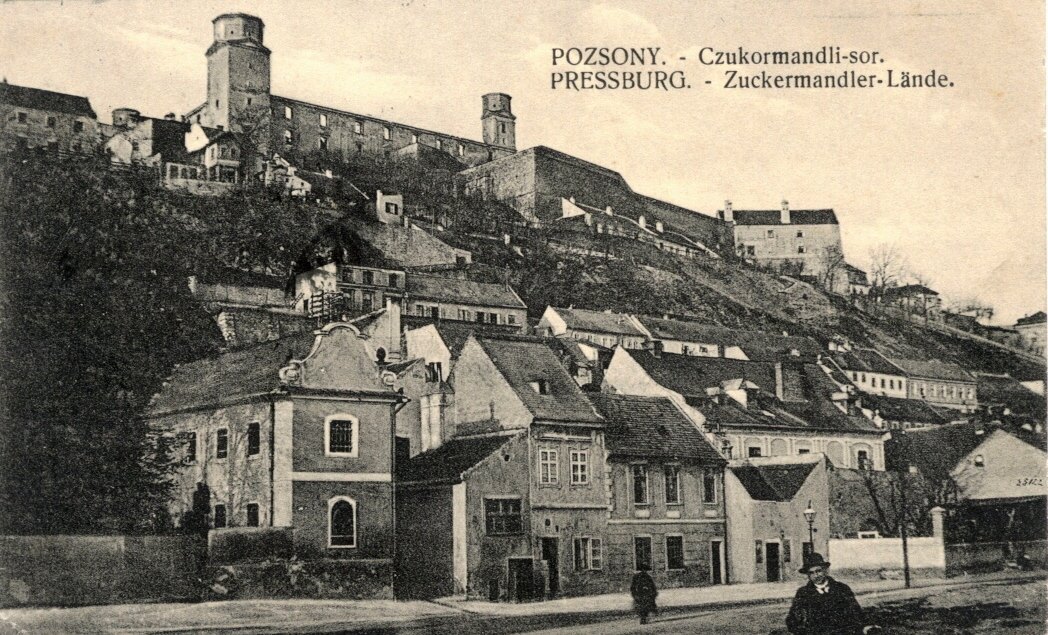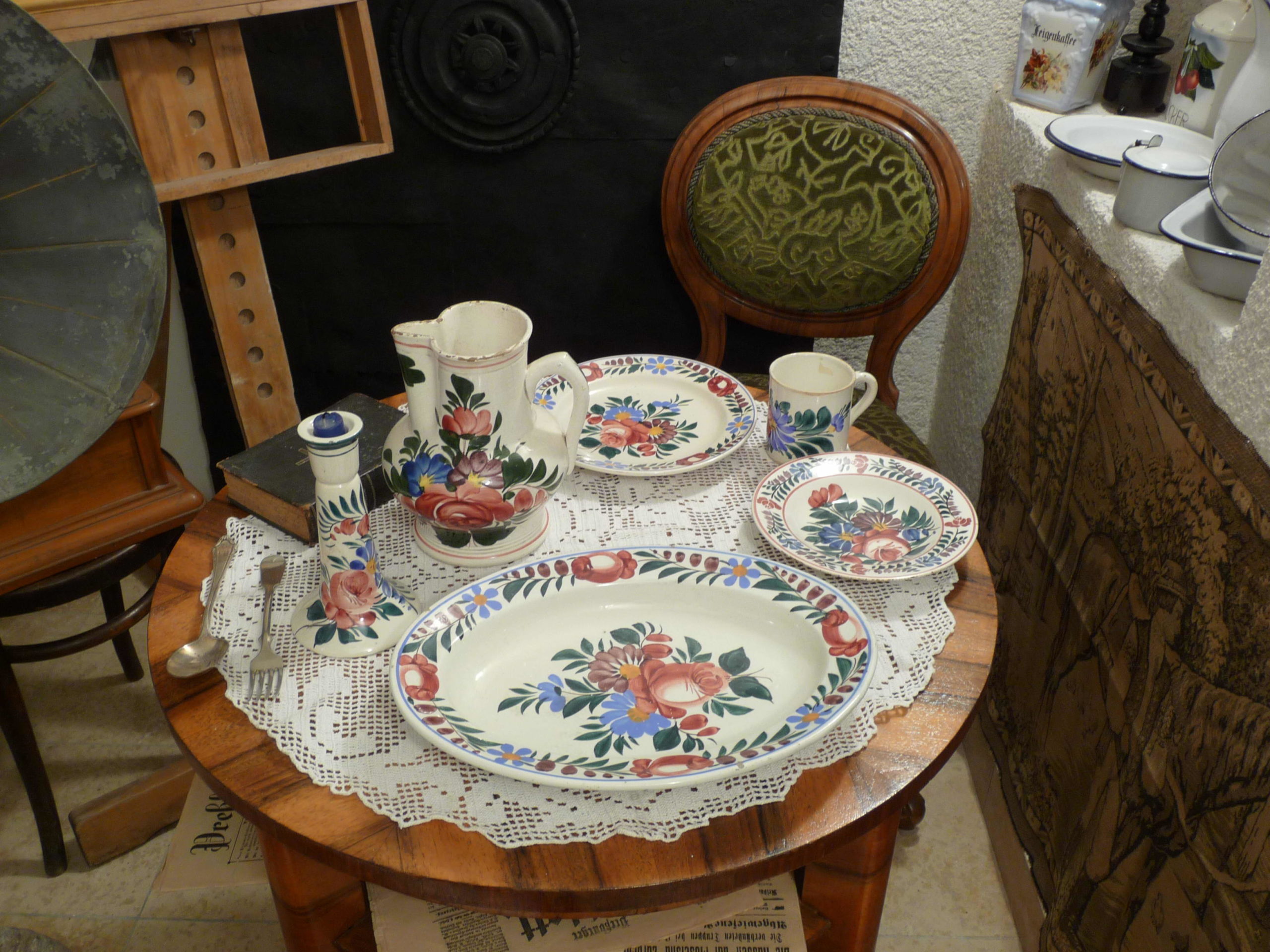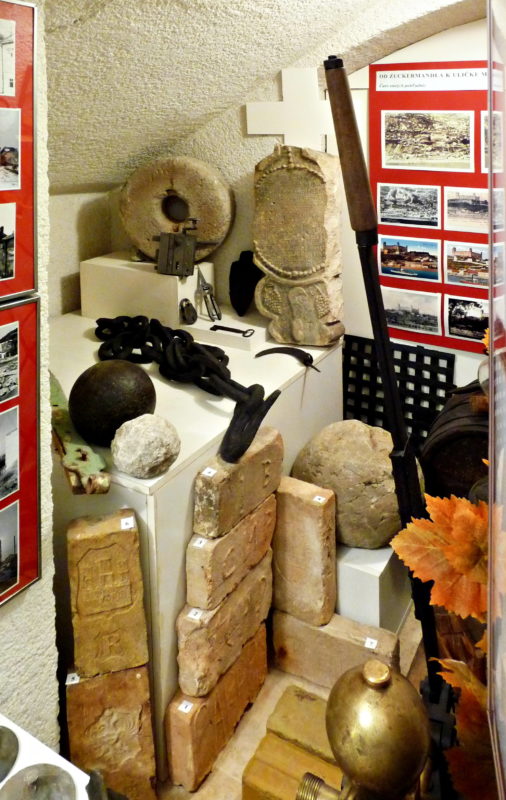Changes of Zuckermandl
The old Bratislava is not just the Old Town
Zuckermandl, of which only a few historical buildings remain, underwent transformations from a small medieval settlement of fishermen and sailors, through a district with fortified Renaissance residences of noble castle officials and buildings of several royal offices, in a dynamically developing privileged town with a vibrant bourgeois life during the Theresian period, to the decline in the 20th century and the subsequent unfortunate mass redevelopment.
Currently, there are some specialized museums of the Slovak National Museum, among them the Museum of Carpathian German Culture located in the Sunyal Mansion. It is here that you will find an exhibition mapping the history of this site and find out how Zuckermandl changed over time.

The settlement of Zuckermandl was located in the southern part of Bratislava’s Podhradie, the extramural settlement approximately between the castle bank and the Danube. Originally it was a separate municipality known as a district of fishermen, sailors, ship carpenters, but also millers. Zuckermandl with numerous short and narrow streets had its own council, its own police, and a school.
It is said that the name “Zuckermandel” was brought by peasant colonists from central Bavaria in the Middle Ages. It comes from the German dialect “Zucke Mantel” meaning “Zucke den Mantel zur Flicht”, which means ‘grab your coat and run’. Such a name was used as a joking and warning sign for places of little safety.
Zuckermandl does not have such a rich history as the neighboring and somewhat more famous Vydrica. It was established in the 16th century as a separate settlement. The district of Podhradie stretched from the Water Tower, where it was bordered by Vydrica, to the old Jewish cemetery near today’s tram tunnel.
The independence of Zuckermandl ended in 1851 with the annexation of the town of Bratislava. Podhradie then formed the fourth town district – the Theresian Quarter. However, it was also the beginning of the decline of this town district: more affluent residents moved to the city, palaces were rebuilt into rented apartments of lower categories, for the poorer. At the end of the 19th century, an embankment with a tram line was built on the Danube embankment, with parts of Zuckermandl and Vydrica reaching below ground level. Zuckermandl continued to fade.
Bratislava underwent a huge transformation during the 20th century, and the largest one hit Podhradie. Thanks to the events of World War II, a vast majority of the Jews died in concentration camps and the Germans were displaced after the war. Podhradie disturbed the image of the city, so the responsibles worked out plans to liquidate it. In the 1960s and 1970s, most of Zuckermandl was teared down.
Many buildings were removed during the construction of the waterfront road, others during the completion of the tunnel and the construction of three highrise blocks of flats. During the construction of the New Bridge in 1967-1974, a mass demolition took place. In the past, there was also a swimming pool on the site of the former Zuckermandl town hall on Žižka Street, but this also practically does not exist anymore. This street was once known as Maria Theresa Street or Podhradie Street, the main axis of the district.
After the Communists demolished almost the whole of Vydrica and Zuckermandl, the Baroque Church of the Holy Trinity and several mansions and few other buildings were preserved on today’s Army General Ludvík Svoboda Embankment. Most of them belong to the Slovak National Museum. Thanks to this, the original face of all buildings owned by the Ministry of Culture and the Slovak National Museum has been restored and at least part of this defunct historical part of Bratislava has been preserved for future generations in its original appearance.

